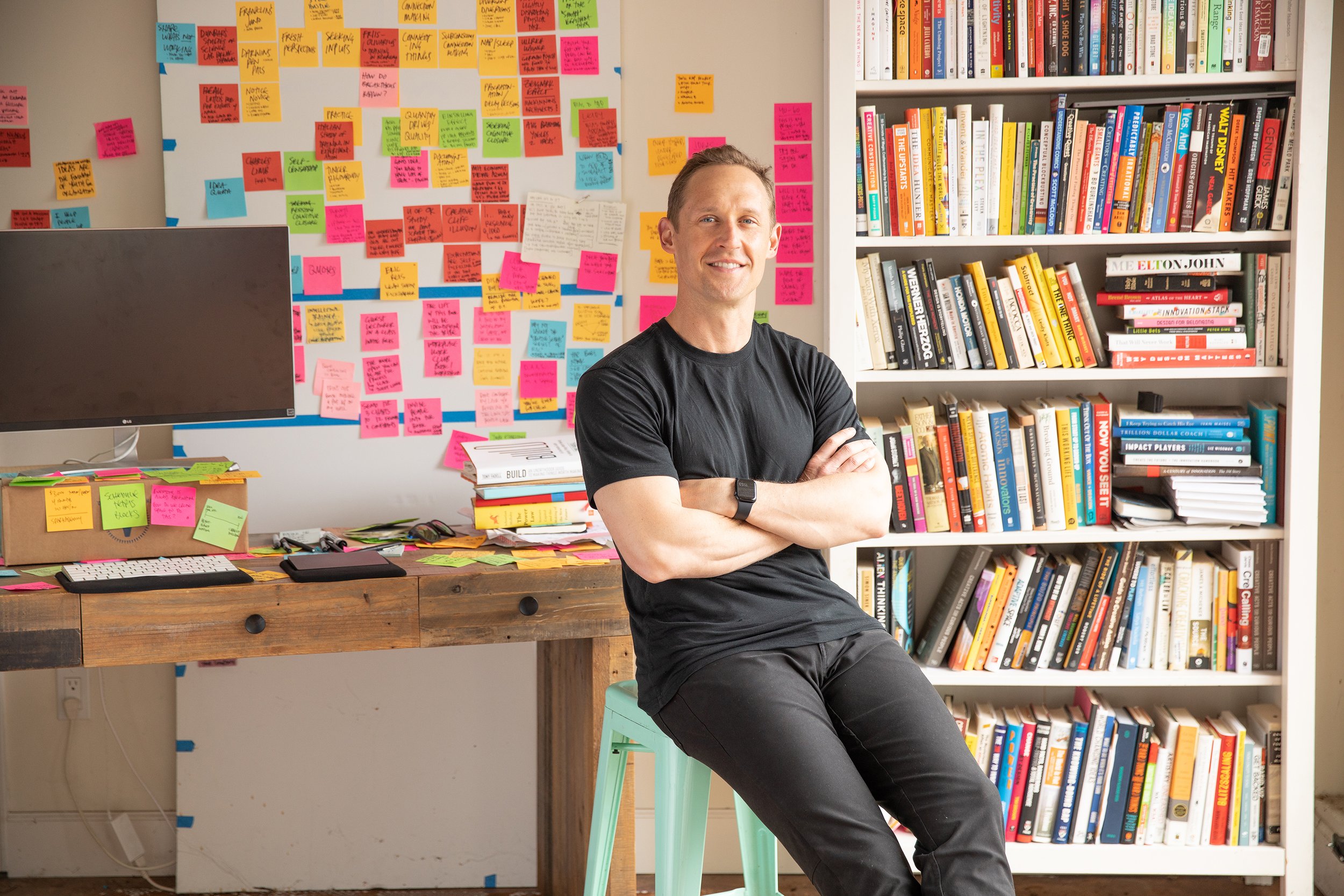
Methods of the Masters
A blog on the art & science of creative action.
Capture Inspiration
Inspiration is fleeting. No matter how good one’s capture mechanisms are, they’re limited by one’s discipline to actually write ideas down. Victor Hugo’s discipline to capture fueled stories that have endured.
Love Your Critics
André 3000 shines a light on a critical component of the creative process in a recent interview with Rick Rubin. As much as we love compliments, it’s our critics who often help illuminate the rough patches.
Be Skeptical
Design is an optimistic pursuit. But can lead to naïveté, if left unchecked. What most designers need is a healthy dose of skepticism to compliment the optimism with which they approach their efforts.
Try Something New
Steve Jobs said, “Your thoughts construct patterns like scaffolding in your mind. You are really etching chemical patterns. In most cases, people get stuck in those patterns, just like grooves in a record, and they never get out of them.”
Try More Than One
Whitney Burks says, “Don’t go with the first thing that comes to mind. The truly great ideas are the ones that come after that.” The sad irony is that NOT expecting better ideas to come along is a self-fulfilling prophecy.
Embrace Contradictions
The rules of creative genius are not only opposed to many of the rules of being smart, they even seem to be at odds with one another! Deal with it…
Look For What’s Wrong
Cultivating an attention to frustrations is a fantastic competency to develop. Because frustrations are often the soil in which new innovations flourish, minding your frustrations can yield entrepreneurial gold!
Look For Connections
A fascinating psychology study reveals a disturbing truth: the world around is ripe with potential inspiration, often left unnoticed simply because we aren’t actively looking.
Look At Nothing
While creativity is certainly a function of connecting inputs, it’s also a function of cultivating enough disconnection to be able to synthesize those inputs. A growing body of research demonstrates the benefits of “looking at nothing.”
When You’re Stuck, Stall
Tina Fey reveals the secret creativity technique she learned from Lorne Michaels at the moment she needed it most: when deciding whether she’d play Sarah Palin on Saturday Night Live.
Curate Learning Partners
This post is from Peter Sims, co-founder of FUSE corps and GivingTuesday, and author of Little Bets. He’s observed leaders like Beth Comstock and Steve Jobs carefully curate their constellation of collaborators.
Seed Your Subconscious
John Steinbeck said, “It is a common experience that a problem difficult at night is resolved in the morning after the committee of sleep has worked on it.” Reid Hoffman deliberately puts items on the agenda of tonight’s meeting.
Don’t Worry About Good Enough
d.school Fellow Ise Lyfe says, “It doesn’t matter if you’re good enough. You most certainly aren’t, at any new task… the question is: are you great enough to rise to a new challenge?”
Expect Good Ideas to Come Late
Shockingly, one of the greatest determinants of the overall quality of your ideas is your expectation of when good ideas will come. If you want to improve your creative output, then expect good ideas to keep coming!
Embrace Discomfort
“This can’t be all I’m supposed to be doing.” Ashanti Branch, the talent behind the #millionmasksmovement, shares how he made the slow-but-profound transition from high school math teacher to movement-maker. His experience is surprisingly common.
Dig Through Your Junk
Maya Angelou said, “I can’t work in a pretty surrounding. It throws me.” I agree. But I’d like to make the case for tidying up every now and then. This is a spin on “clean up,” but it’s deeper than that.
Engage Extreme Users
It’s tempting to think that the best place to start is smack dab in the middle of the bell curve. But that’s not the case. The history of innovation teaches that the best breakthroughs (even for the middle of the curve) come from the extremes.
Train Your Brain
What is your regular creative training regimen? David Kelley once told me, “I think people fail to realize that the first-order goal is to be getting in practice. The first step is training your mind to think differently.”
Think Outside the Box
It’s not as complicated as it seems. The only thing we have to give up is a sense of efficiency. As is the case with so many tactics for breakthrough thinking, we have to be willing to indulge irresponsibility to think beyond the box.
Create From The Future
This guest post comes from Gavin Guidry, Creative Director at R/GA. Gavin writes, “Rather than viewing each brief as the impetus for creation, let’s look at the future that we want to see, and ask how our work can bring us closer.”




















